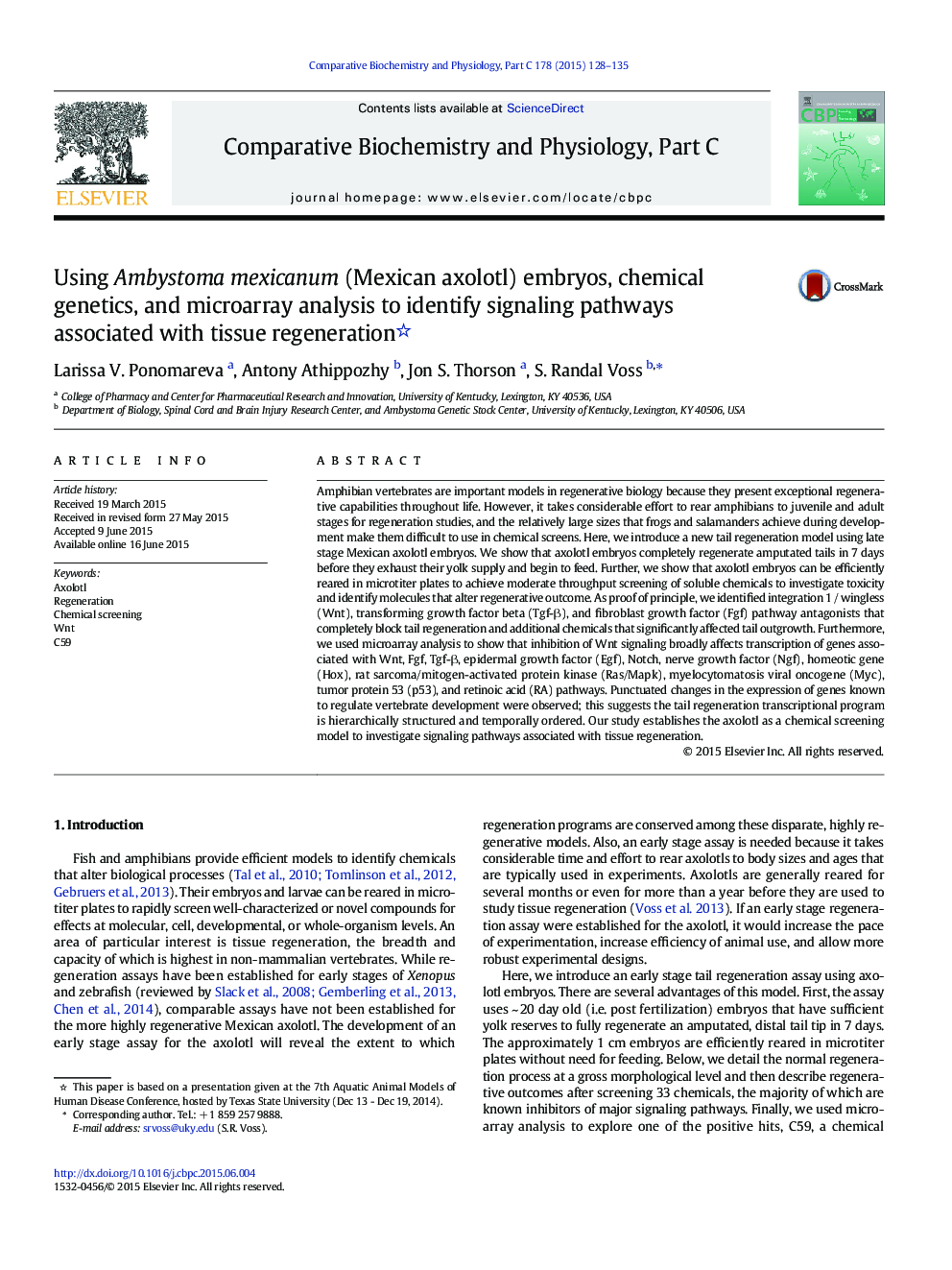| کد مقاله | کد نشریه | سال انتشار | مقاله انگلیسی | نسخه تمام متن |
|---|---|---|---|---|
| 1977202 | 1539281 | 2015 | 8 صفحه PDF | دانلود رایگان |

Amphibian vertebrates are important models in regenerative biology because they present exceptional regenerative capabilities throughout life. However, it takes considerable effort to rear amphibians to juvenile and adult stages for regeneration studies, and the relatively large sizes that frogs and salamanders achieve during development make them difficult to use in chemical screens. Here, we introduce a new tail regeneration model using late stage Mexican axolotl embryos. We show that axolotl embryos completely regenerate amputated tails in 7 days before they exhaust their yolk supply and begin to feed. Further, we show that axolotl embryos can be efficiently reared in microtiter plates to achieve moderate throughput screening of soluble chemicals to investigate toxicity and identify molecules that alter regenerative outcome. As proof of principle, we identified integration 1 / wingless (Wnt), transforming growth factor beta (Tgf-β), and fibroblast growth factor (Fgf) pathway antagonists that completely block tail regeneration and additional chemicals that significantly affected tail outgrowth. Furthermore, we used microarray analysis to show that inhibition of Wnt signaling broadly affects transcription of genes associated with Wnt, Fgf, Tgf-β, epidermal growth factor (Egf), Notch, nerve growth factor (Ngf), homeotic gene (Hox), rat sarcoma/mitogen-activated protein kinase (Ras/Mapk), myelocytomatosis viral oncogene (Myc), tumor protein 53 (p53), and retinoic acid (RA) pathways. Punctuated changes in the expression of genes known to regulate vertebrate development were observed; this suggests the tail regeneration transcriptional program is hierarchically structured and temporally ordered. Our study establishes the axolotl as a chemical screening model to investigate signaling pathways associated with tissue regeneration.
Journal: Comparative Biochemistry and Physiology Part C: Toxicology & Pharmacology - Volume 178, December 2015, Pages 128–135